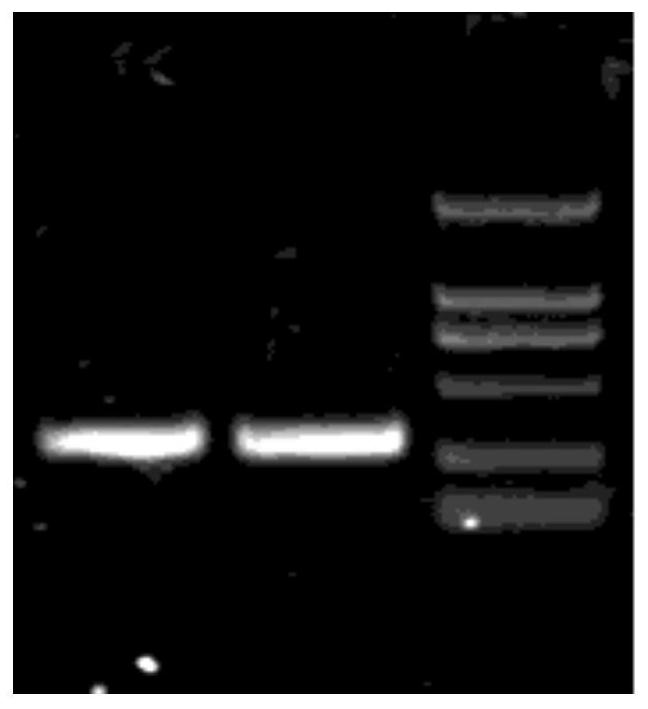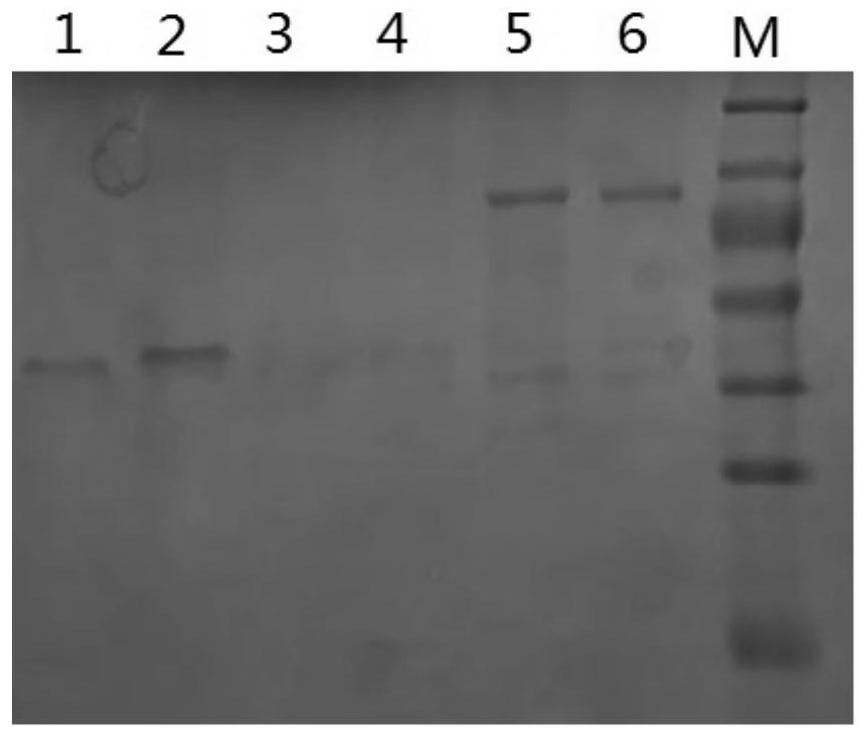Anti-egfr single-chain antibody, anti-pd1 single-chain antibody and fusion protein
A single-chain antibody, antibody technology, applied in the fields of immunology and molecular biology, can solve the problems of toxic and side effects of the body, increased preparation costs, steric hindrance effects, etc.
- Summary
- Abstract
- Description
- Claims
- Application Information
AI Technical Summary
Problems solved by technology
Method used
Image
Examples
Embodiment 1
[0031] Example 1 Preparation of anti-EGFR and anti-PD1 bispecific antibodies
[0032] 1.1 Establishment of high-capacity natural antibody library.
[0033] Isolation of human peripheral blood mononuclear lymphocytes: 100 healthy adults were randomly selected, and 10ml of peripheral blood was drawn from each person. Dilute 1:1 with RPMI-1640 medium containing 10% heparin, add it to a centrifuge tube containing lymphocyte separation medium (the volume ratio of diluted venous blood and lymphocyte separation medium is 2:1), 2,000 × g, Centrifuge for 17 minutes. The milky white mononuclear cell layer at the interface of lymphocyte separation medium was aspirated and washed twice with PBS buffer.
[0034] 1.2 Extraction of total cell RNA
[0035] per 5 x 10 6 Trizol reagent was added at the ratio of cells / ml, and the cells were lysed by pipetting. Incubate at room temperature for 5 min, transfer to a DEPC-treated EP tube, add 1 / 5 volume of chloroform, shake vigorously for 15 sec,...
Embodiment 2
[0075] Example 2. Purification of bispecific antibodies
[0076] The sequences of the two ScFvs were re-synthesized to connect the light chain variable region and heavy chain of the anti-PD1 single-chain antibody according to the heavy chain variable region and light chain variable region of the anti-epidermal growth factor receptor single-chain antibody The sequence of the variable regions is rearranged to form new bispecific antibodies. The amino acid sequences of the CDR1, CDR2 and CDR3 regions of the light chain of the anti-epidermal growth factor receptor single-chain antibody are respectively shown in SEQ ID NO.1, 2 and 3, and the amino acid sequences of the CDR1, CDR2 and CDR3 regions of the heavy chain are respectively as follows SEQ ID NO. 5, 6 and 7 are shown. The amino acid sequences of the light chain variable region and the heavy chain variable region are shown in SEQ ID NO. 4 and 8, respectively. The amino acid sequence of the linking polypeptide is shown in SE...
Embodiment 3
[0090] Example 3. Proliferation effect of anti-EGFR-PD1 bispecific antibody on T cells
[0091] CCK8 detects the proliferation of T cells
[0092] The suspended T cells were collected, centrifuged at 1200 rpm for 3 min, and the supernatant was discarded;
[0093] Add 3ml of normal saline, centrifuge at 1200rpm for 3min, discard the supernatant, add 4ml of AIM-V culture medium,
[0094] count;
[0095] Take out four 96-well plates and add 4×10 4 PIK-PD1T cells and blank T cells per well, the total volume is 100ul, and 3 duplicate wells are set;
[0096] Put into 37°C, 5% C0 2 After culturing in the incubator with 10ul of CCK8 reagent at 0h, 24h, 48h, and 72h respectively at 37°C for 6h (the incubation time varies from cell to cell, but the incubation time in the same experiment should be the same), the culture solution becomes After brown-red, measure the OD value at 450nm on the microplate reader;
PUM
| Property | Measurement | Unit |
|---|---|---|
| affinity | aaaaa | aaaaa |
Abstract
Description
Claims
Application Information
 Login to View More
Login to View More - R&D Engineer
- R&D Manager
- IP Professional
- Industry Leading Data Capabilities
- Powerful AI technology
- Patent DNA Extraction
Browse by: Latest US Patents, China's latest patents, Technical Efficacy Thesaurus, Application Domain, Technology Topic, Popular Technical Reports.
© 2024 PatSnap. All rights reserved.Legal|Privacy policy|Modern Slavery Act Transparency Statement|Sitemap|About US| Contact US: help@patsnap.com










